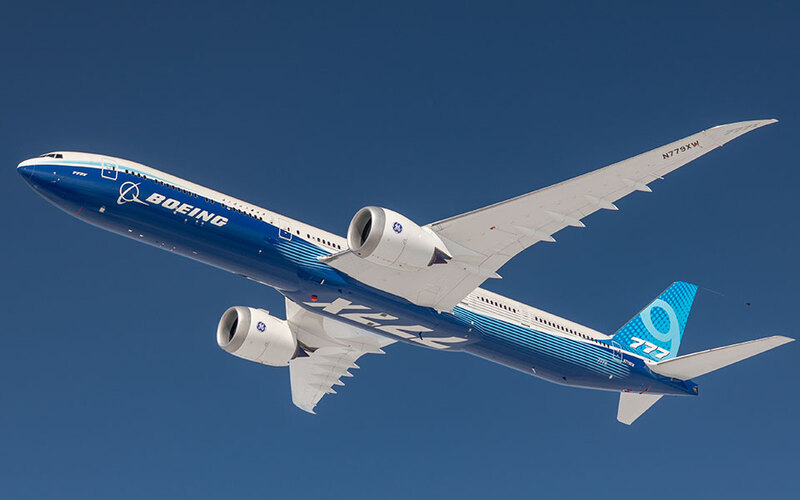Sunday, May 25, 2025
Boeing Redesigns Thrust Links for 777X Aircraft to Overcome Delays and Improve Safety
Boeing has achieved significant breakthroughs in overcoming the engineering challenges that have hindered the long-awaited debut of its 777X widebody aircraft.The aerospace giant has redesigned the engine thrust links to fix fatigue-related problems that resulted in a four-month setback during the aircraft’s certification testing. This redesign is intended to improve the aircraft’s safety, performance, and dependability, with the 777X now slated for entry into service by 2026.
A New Era for the Boeing 777X
Originally set for certification in 2020, the 777X was heralded as the next generation of Boeing’s successful 777 widebody aircraft family. Designed to offer improvements in fuel efficiency, range, and passenger comfort, the 777X promised to be a game-changer for long-haul travel. However, the aircraft’s certification process has encountered several setbacks, pushing back the timeline for both certification and commercial deliveries.
Boeing began the rigorous process of certifying the 777X with extensive flight testing. Four dedicated test aircraft were used to evaluate the new design’s safety characteristics, flight performance, and operational capabilities. Despite high expectations, the certification faced an early hurdle when the first major technical issue emerged in 2020.
Technical Hurdles: Uncommanded Pitch Event
In 2020, Boeing encountered a serious flight control anomaly that delayed certification significantly. An “uncommanded pitch event” caused the aircraft’s nose to rise unexpectedly during flight, which could have led to dangerous consequences if not addressed quickly. This issue required extensive work from Boeing’s engineers to resolve. The anomaly led to several years of delays as safety modifications and adjustments to the flight control system were developed.
While Boeing worked to resolve this problem, additional challenges arose, culminating in the August 2024 discovery of thrust link failures on one of the test aircraft. The thrust links, which transfer loads between the engine and the wing structure, were found to have developed cracks. Further inspections revealed similar issues with other aircraft in the test fleet, prompting Boeing to ground all four test aircraft in August 2024.
A Four-Month Grounding
The discovery of these cracks in the thrust links was a significant blow to the 777X program. The thrust links are critical components that bear significant loads during flight, and the fatigue-related failures raised concerns about the aircraft’s overall integrity. Boeing had to halt all certification flights for a period of four months in order to resolve the issue. The grounding of the test aircraft halted progress on the certification process, as engineers worked tirelessly to identify the root cause and develop a solution.
The grounding was particularly frustrating as it added yet another layer of delay to an already extended timeline. Boeing engineers determined that the fatigue issues were caused by the design of the original thrust links, which were unable to withstand the stresses they were subjected to during flight. This required a complete redesign of the components to ensure the aircraft’s long-term safety and reliability.
Resuming Certification with Design Improvements
After months of development and testing, Boeing resumed certification flights in January 2025. During the hiatus, the company installed temporary thrust link solutions and conducted extensive ground testing to evaluate their effectiveness. By mid-January, Boeing had gained enough confidence in the new configuration to resume flight testing, with the improved thrust links in place.
Although temporary solutions were implemented, Boeing recognized that the redesigned components had to be permanently installed to guarantee the aircraft’s compliance with safety standards. As part of a larger overhaul of the aircraft’s design, Boeing intends to install the final upgraded thrust links by the summer of 2025, ensuring the 777X meets the certification requirements set by both the FAA and EASA.
The Road to Certification and Deliveries
With the redesign of the thrust links and other adjustments, Boeing is now targeting late 2025 or early 2026 for the 777X’s certification. Once the aircraft is certified, commercial deliveries will follow shortly thereafter. Lufthansa is expected to be the first airline to receive the 777X, with deliveries anticipated to begin in 2026. Boeing CEO Kelly Ortberg confirmed that Lufthansa would take delivery of the first 777X once certification is complete.
Emirates, another key customer, is now set to receive its first 777X by the close of 2026, overcoming previous doubts regarding the delivery schedule.
The airline has placed an order for 205 units of the 777X, making it the largest customer for the aircraft model globally. Emirates Chairman and CEO Sheikh Ahmed bin Saeed Al Maktoum expressed confidence during a media roundtable at the Arabian Travel Market in Dubai that the airline’s 777X deliveries would meet expectations by the end of 2026.
The Significance of the 777X
The 777X is set to redefine long-haul travel, combining cutting-edge technology with improved fuel efficiency, greater passenger comfort, and longer range. The aircraft’s redesigned wings, which feature folding tips, allow for better aerodynamics and increased fuel efficiency, while its new engines, the GE9X, promise a significant reduction in fuel consumption compared to older models.
For Boeing, the 777X is not just a commercial aircraft—it is also a symbol of resilience and innovation. Despite the setbacks that have delayed its arrival, the aircraft promises to be a major player in the global aviation market once it enters service. The redesign of key components, including the thrust links, underscores Boeing’s commitment to delivering a safe, high-performance aircraft that meets the needs of both airlines and passengers.
